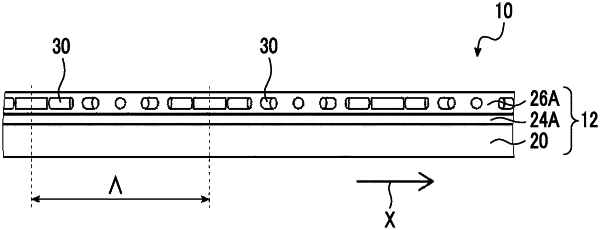| CPC G02B 6/0056 (2013.01) [C09K 19/605 (2013.01); G02B 5/208 (2013.01); G02B 5/3016 (2013.01); G02B 6/0026 (2013.01); G02B 6/005 (2013.01)] | 18 Claims |

|
1. An optical element comprising:
an optically-anisotropic layer that is formed using a composition including a liquid crystal compound and an infrared absorbing colorant,
wherein the optically-anisotropic layer has a liquid crystal alignment pattern in which a direction of an optical axis derived from the liquid crystal compound changes while continuously rotating in at least one in-plane direction,
an absorption of the infrared absorbing colorant in a wavelength range of 700 to 2000 nm in a minor axis direction is higher than an absorption of the infrared absorbing colorant in a wavelength range of 700 to 2000 nm in a major axis direction, and
the optically-anisotropic layer has a region where the optical axis is twisted in a thickness direction of the optically-anisotropic layer and rotates.
|